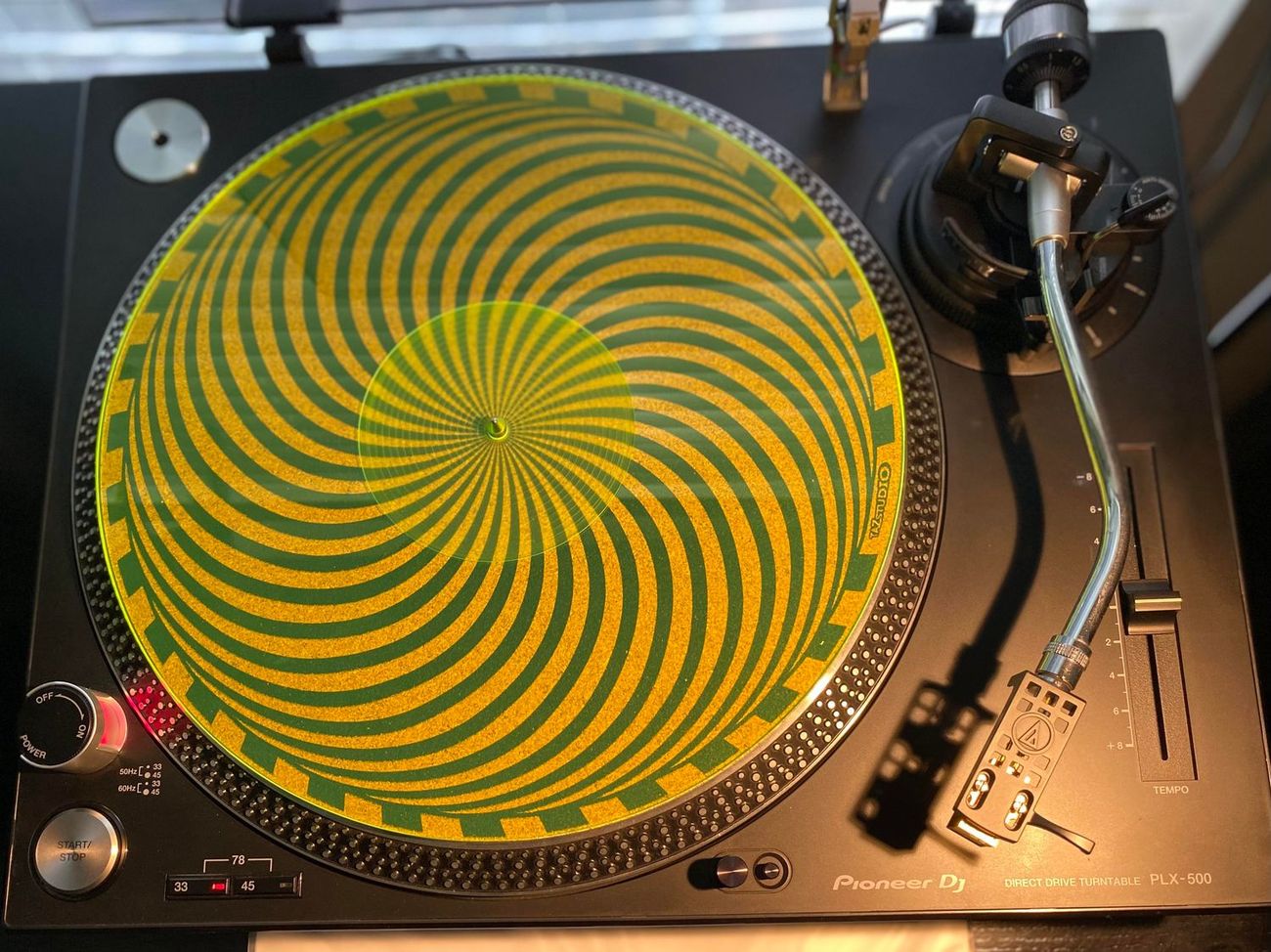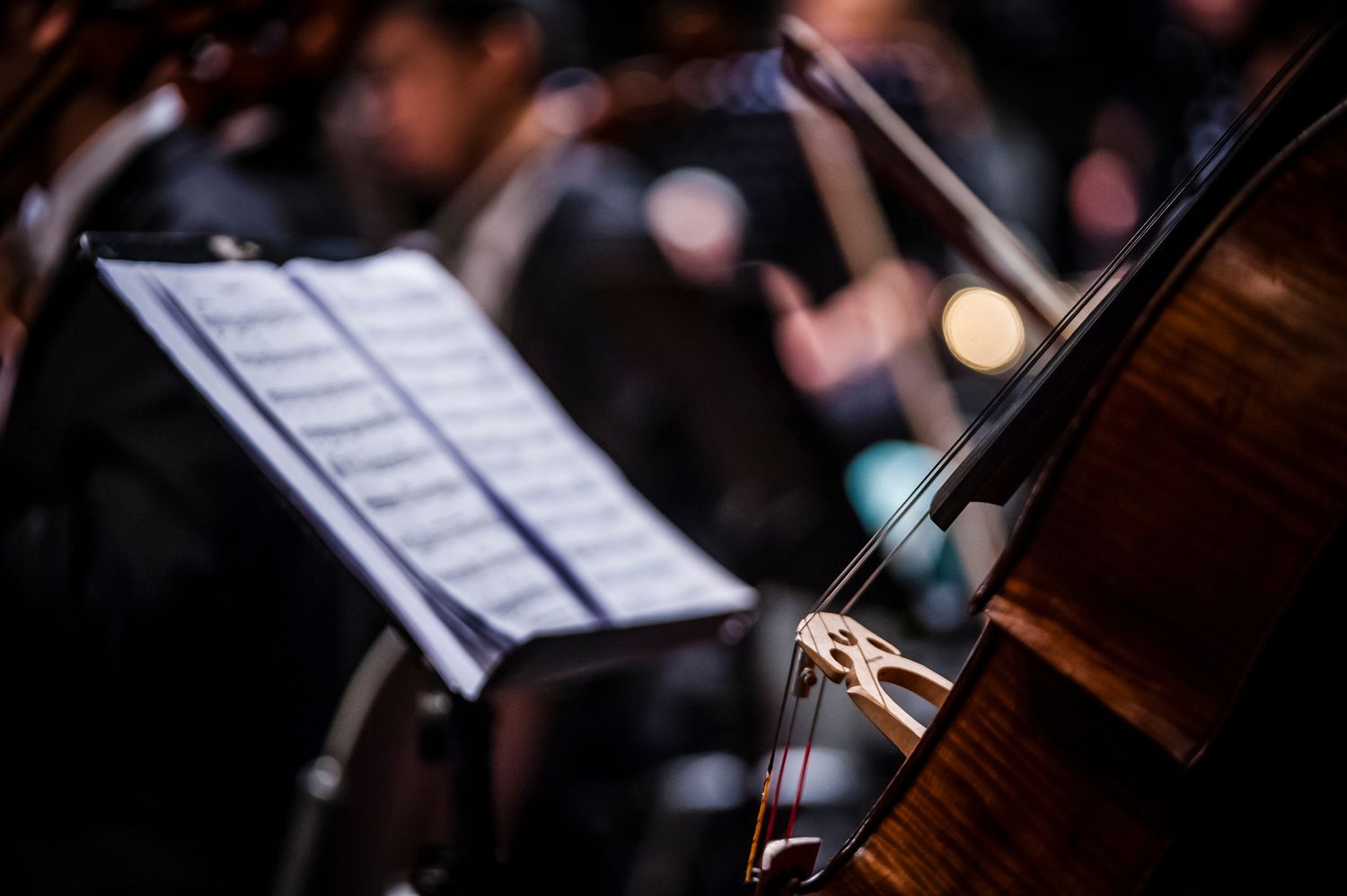Home>Production & Technology>Tempo>How Does Tempo Affect Our Response To Music


Tempo
How Does Tempo Affect Our Response To Music
Published: December 10, 2023
Discover how the tempo of music influences our emotional and physiological responses. Explore the fascinating connection between rhythm and our perception of music.
(Many of the links in this article redirect to a specific reviewed product. Your purchase of these products through affiliate links helps to generate commission for AudioLover.com, at no extra cost. Learn more)
Table of Contents
Introduction
Music has a profound impact on our emotions and cognitive processes. It is a universal language that can evoke strong reactions and transport us to different emotional states. One of the key elements that contributes to the emotional and cognitive effects of music is tempo. Tempo refers to the speed or pace of a musical piece, and it plays a significant role in how we respond to and perceive music.
In this article, we will explore the fascinating relationship between tempo and our response to music. We will delve into the emotional and cognitive effects of fast and slow tempo music, as well as how tempo influences our physical response and musical preferences.
Understanding the impact of tempo on our musical experiences can help us appreciate the intricacies of music and enhance our ability to use music for therapeutic and recreational purposes. So, whether you’re a music lover, a musician, or simply curious about the science behind our emotional connection to music, join us on this journey to explore the fascinating world of tempo and its effects on our response to music.
What is Tempo?
Tempo is a fundamental element of music that refers to the speed or pace at which a musical piece is performed. It can be described using various musical terms, such as allegro (fast), adagio (slow), or presto (very fast). The tempo of a song sets the overall mood, energy, and feel of the music.
Tempo is typically measured in beats per minute (BPM), indicating the number of beats or pulses per minute. For example, a song with a tempo of 120 BPM has 120 beats in one minute. The tempo can vary from piece to piece, creating different musical experiences and evoking different emotional responses.
Tempo plays a crucial role in shaping the emotional and cognitive effects of music. Different tempos can elicit distinct reactions and evoke various emotional states. Fast tempo music tends to create a sense of energy, excitement, and urgency, while slow tempo music often evokes feelings of calmness, relaxation, and contemplation.
It is important to note that tempo is not the only factor that influences our response to music. Factors such as melody, harmony, dynamics, and lyrics also contribute to the overall emotional and cognitive experience of a musical piece. However, tempo holds a unique position in music, as it directly affects the rhythmic and temporal aspects of a composition and has a profound impact on the listener.
Understanding the concept of tempo allows us to appreciate the intentions of composers, performers, and music producers. It helps us analyze and interpret the music we listen to, and empowers us to make informed choices when selecting music for different purposes, such as relaxation, motivation, or celebration.
The Emotional Effects of Fast Tempo Music
Fast tempo music has a remarkable ability to energize and excite us. Its quick pace and rhythmic patterns stimulate our senses and can have a significant impact on our emotional state. Listening to fast tempo music is often associated with feelings of happiness, excitement, and motivation.
One of the key emotional effects of fast tempo music is the activation of the brain’s reward system. The upbeat and energetic qualities of fast tempo music trigger the release of dopamine, a neurotransmitter associated with pleasure and reward. This can create a sense of euphoria and boost our mood, making fast tempo music an excellent choice when we need an energy boost or want to lift our spirits.
Additionally, fast tempo music has the power to enhance our motivation and drive. Its energetic rhythm and lively melodies can increase our heart rate and stimulate our physical and mental energy levels. This makes fast tempo music a popular choice for workouts, as it can help us maintain focus, intensity, and endurance during physical activities.
Fast tempo music can also elicit a sense of excitement and anticipation in the listener. The rapid pace and rhythmic patterns create a sense of forward momentum, leading to a thrilling and exhilarating experience. This emotional response is often utilized in genres such as electronic dance music (EDM) and rock, where the frenetic energy of fast tempo music drives the listener’s engagement and encourages movement.
However, it’s important to note that the emotional effects of fast tempo music can vary from person to person and depend on individual preferences and psychological factors. While fast tempo music generally evokes positive emotions, it may not have the same effect on everyone. Some individuals may find fast tempo music overwhelming or anxiety-inducing, depending on their personal taste and emotional state.
Overall, fast tempo music has the ability to uplift, energize, and evoke positive emotions. Whether it’s a lively dance track, an upbeat pop song, or a high-tempo instrumental piece, the emotional effects of fast tempo music can leave us feeling invigorated, motivated, and ready to take on the world.
The Emotional Effects of Slow Tempo Music
While fast tempo music has its energizing effects, slow tempo music, on the other hand, has a unique ability to soothe and calm our emotions. Its relaxed pace and gentle melodies create a sense of tranquility and contemplation, making it an ideal choice for relaxation, meditation, and emotional introspection.
One of the primary emotional effects of slow tempo music is its ability to induce a state of relaxation and calm. The slower pace allows our bodies and minds to unwind and let go of tension and stress. This can promote a sense of serenity and peacefulness, helping us to alleviate anxiety and find solace in the music.
Slow tempo music is often associated with feelings of introspection and introspection. Its gentle rhythms and melodic harmonies invite us to slow down our thoughts and reflect on our emotions and experiences. It can create a space for emotional processing and introspection, allowing us to connect with our inner selves and gain deeper insights and understanding.
Another emotional effect of slow tempo music is its ability to evoke a sense of comfort and nostalgia. The gentle and melodic qualities of slow tempo music can evoke memories and bring about a feeling of warmth and familiarity. It has the power to transport us to a different time or place, triggering emotions and reminiscing on past experiences.
Slow tempo music can also be deeply moving and evoke a sense of sadness or melancholy. Its emotive qualities and expressive melodies can resonate with our own experiences of heartbreak, loss, or contemplation, providing a cathartic release for our emotions. This is often seen in genres such as classical music or certain ballads, where the slow tempo captures the depth and complexity of human emotions.
However, it is important to note that slow tempo music may not always have a relaxing or positive effect on everyone. Some individuals may find it somber or depressive in certain situations or emotional states. Music preferences are subjective, and the emotional effects of slow tempo music can vary depending on personal taste and individual experiences.
In summary, slow tempo music has a profound ability to relax, soothe, and inspire introspection. It can provide a sanctuary for our emotions, allowing us to find solace, reflection, and emotional release. Whether it’s a soft ballad, a calming instrumental piece, or a meditative track, slow tempo music has the power to nourish our souls and transport us to a state of emotional tranquility.
The Cognitive Effects of Fast Tempo Music
Fast tempo music not only has emotional effects but also influences our cognitive processes. The energetic and rapid pace of fast tempo music can have a significant impact on our cognitive functions, including attention, memory, and productivity.
One of the key cognitive effects of fast tempo music is its ability to enhance attention and focus. The fast rhythm and stimulating melodies capture our attention and can help improve concentration. This can be particularly beneficial when engaging in tasks that require mental alertness and concentration, such as studying, working on complex projects, or problem-solving.
Fast tempo music can also have an impact on our memory and learning abilities. Research suggests that listening to fast tempo music while studying or learning new information can improve memory retention and recall. The stimulating qualities of fast tempo music may enhance cognitive processing and aid in the encoding and retrieval of information.
Furthermore, fast tempo music can boost cognitive processing speed. The rapid pace of the music can stimulate neural activity, promoting quicker mental processing and responsiveness. This can be advantageous in situations that require quick decision-making, such as fast-paced work environments or competitive sports.
Fast tempo music can also enhance our productivity and motivation. The energetic and upbeat qualities of fast tempo music can increase our overall energy levels and drive, leading to enhanced productivity and performance. It can serve as a source of motivation, helping us stay focused, engaged, and energized throughout tasks or activities.
However, it’s important to note that while fast tempo music can be beneficial for certain cognitive tasks, it may not always be suitable for every situation. In some cases, fast tempo music can be distracting, especially when engaged in tasks that require deep concentration or a calm state of mind. It’s essential to find the right balance and consider individual preferences and the nature of the task at hand.
In summary, fast tempo music has cognitive effects that can enhance attention, memory, and productivity. Its stimulating qualities can improve focus, aid in memory retention, and promote faster cognitive processing. Whether it’s for studying, problem-solving, or boosting productivity, fast tempo music can be a valuable tool in maximizing cognitive performance.
The Cognitive Effects of Slow Tempo Music
Slow tempo music not only has emotional effects but also influences our cognitive processes in unique ways. The gentle and relaxed pace of slow tempo music can have a significant impact on our cognitive functions, including creativity, problem-solving, and stress reduction.
One of the key cognitive effects of slow tempo music is its ability to induce a state of relaxation and calm. When we are in a relaxed state, our cognitive processes become more receptive and open. Slow tempo music helps quiet our minds and reduce stress, creating a conducive environment for creative thinking and problem-solving.
Slow tempo music can also enhance our creativity and imagination. The meditative qualities of slow tempo music create a tranquil and introspective atmosphere that encourages free-flowing thoughts and inspiration. It can provide a mental escape and stimulate creative thinking, making it an excellent choice for artistic endeavors, brainstorming sessions, or when seeking innovative solutions to problems.
Furthermore, slow tempo music can aid in stress reduction and mental clarity. The soft and soothing melodies can help slow down our racing thoughts, alleviate anxiety, and promote a sense of mental clarity and focus. This can be particularly beneficial when trying to concentrate, relax, or engage in activities requiring mental acuity.
In addition, slow tempo music can have a positive impact on memory and learning. The calming and gentle rhythms of slow tempo music can create a relaxed and receptive state that enhances the encoding and consolidation of information. It may improve our ability to retain and recall newly acquired knowledge or concepts.
It’s important to note that while slow tempo music can be beneficial for certain cognitive functions, it may not always be appropriate or effective in every situation. Different tasks or activities require varying levels of cognitive arousal, and slow tempo music may not be suitable for highly demanding or time-sensitive tasks that require fast decision-making or mental alertness.
Overall, slow tempo music has cognitive effects that can promote relaxation, creativity, and stress reduction. Its calming qualities create an optimal environment for creative thinking, problem-solving, and mental clarity. Whether it’s for artistic pursuits, stress management, or fostering a peaceful mindset, slow tempo music can be a valuable tool in nurturing cognitive well-being.
Tempo and Physical Response to Music
Tempo has a profound influence on our physical response to music. The rhythm and pace of a song can impact our body in various ways, from our heart rate and breathing patterns to our movement and coordination.
When we listen to fast tempo music, our bodies naturally respond with increased energy and movement. The upbeat and lively rhythm of fast tempo music can elevate our heart rate, increase blood flow, and stimulate our muscles. This physical response often leads to spontaneous movement, such as tapping our feet, nodding our heads, or even dancing. Fast tempo music has the power to invigorate and energize our bodies, making it a popular choice for dance parties, exercise routines, and lively social gatherings.
On the other hand, slow tempo music has a calming and relaxing effect on our bodies. The gentle and serene rhythm of slow tempo music can slow down our heart rate, promote deep breathing, and induce a sense of relaxation. It can soothe our muscles and help relieve tension and stress. Slow tempo music is often used in practices such as yoga, meditation, and massage therapy to facilitate a state of physical and mental relaxation.
Research has also shown that the tempo of music can influence our movement and coordination. When we listen to music with a strong and consistent beat, our bodies naturally synchronize with the rhythm. This phenomenon, known as entrainment, occurs when our motor system aligns with the beat of the music. This can improve our coordination and rhythmical abilities, making activities like exercising, playing a musical instrument, or dancing feel more natural and fluid.
It’s important to note that the physical response to tempo can vary from person to person, influenced by individual preferences, cultural factors, and personal experiences. Not everyone may feel inclined to dance or move to fast tempo music, and some individuals may find slow tempo music more conducive to relaxation and stillness.
Overall, tempo plays a significant role in our physical response to music. Fast tempo music can energize and stimulate our bodies, while slow tempo music can induce calmness and relaxation. Whether it’s getting our bodies moving, promoting relaxation, or improving coordination, the tempo of music has a powerful impact on our physical experiences and can enhance our overall well-being.
Tempo’s Influence on Musical Preferences
Tempo is a critical factor in determining our musical preferences. The speed and pace of a song can greatly impact our enjoyment and resonance with a particular genre or style of music.
For some individuals, fast tempo music with its energetic beats and upbeat melodies is a source of excitement and enjoyment. They are drawn to the high energy and the sense of movement that fast tempo music provides. Genres such as pop, rock, EDM (electronic dance music), and hip-hop often incorporate fast tempo elements that appeal to individuals seeking dynamic and invigorating musical experiences.
On the other hand, slow tempo music has its own appeal and captivates a different subset of listeners. Those who prefer slow tempo music are often drawn to its calming and reflective qualities. This is often evident in genres such as classical, jazz, ambient, and certain singer-songwriter or folk music genres. Slow tempo music can create a sense of relaxation, contemplation, and emotional depth that resonates with individuals seeking a more introspective and soothing musical experience.
It is worth noting that personal preferences for tempo can vary based on individual temperament, cultural influences, and personal experiences. For example, individuals from cultures with vibrant traditional dance forms may gravitate towards music with a faster tempo due to its association with movement and celebration. Similarly, individuals who value mindfulness and contemplation may find solace in slower tempo music.
Moreover, the influence of tempo on musical preferences extends beyond individual song choices to the overall genre and style of music that people are drawn to. Whether it’s the catchy beats of fast tempo pop music or the meditative qualities of slow tempo ambient tracks, tempo plays a significant role in shaping one’s musical tastes.
Interestingly, tempo can also influence our perception of other musical elements, such as melody, lyrics, and instrumentation. The tempo of a song can create a specific mood or atmosphere that aligns with the lyrical content or enhances the emotional impact of the melody. For example, a fast tempo can complement energetic and uplifting lyrics, while a slow tempo can enhance the poignancy of emotive lyrics.
Overall, tempo has a remarkable influence on our musical preferences. Whether we are drawn to the energy of fast tempo music or the peacefulness of slow tempo music, our preference for a certain tempo contributes to the diverse tapestry of musical landscapes and adds richness to our individual musical experiences.
Conclusion
The tempo of music holds a captivating power to evoke emotional, cognitive, and physical responses. Whether it’s the fast and energetic beats that excite and motivate us or the slow and gentle melodies that calm and soothe our souls, tempo plays a significant role in shaping our experiences with music.
Fast tempo music ignites our spirits, boosts our energy levels, and stimulates our cognitive processes. It can enhance our focus, memory, and productivity, making it an excellent choice for active and dynamic endeavors. On the other hand, slow tempo music provides a sanctuary of relaxation, introspection, and emotional release. It promotes mindfulness, creativity, and stress reduction, allowing us to connect with our inner selves.
Furthermore, tempo influences our physical response to music. It energizes our bodies, encourages movement, and improves coordination. Fast tempo music can get us dancing, exercising, and feeling the exhilaration of being in the rhythm. Slow tempo music, on the other hand, invites us to find stillness, calm our minds, and sink into a state of tranquility.
Tempo also plays a significant role in shaping our musical preferences. It influences the genres and styles of music that resonate with us, catering to individual preferences for energy, contemplation, or a mixture of both. Our cultural backgrounds, personal experiences, and temperaments also contribute to our affinity for certain tempos.
In conclusion, tempo is a powerful element of music that evokes a wide range of emotional, cognitive, and physical responses. Understanding the impact of tempo allows us to appreciate the nuances of music and utilize it for various purposes, such as relaxation, motivation, and creative expression. Whether we seek the excitement of fast tempo music or the serenity of slow tempo music, tempo adds color, depth, and diversity to our musical experiences, making it an integral part of our connection to the world of sound.











